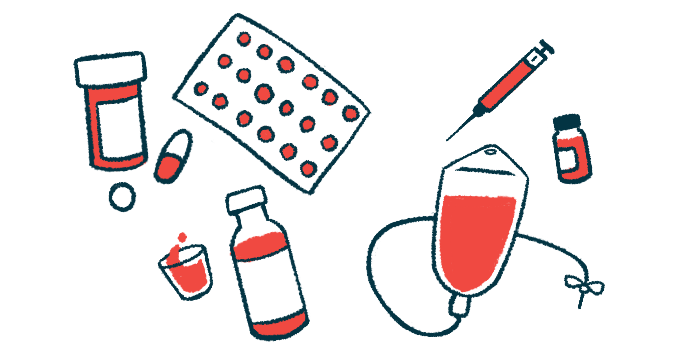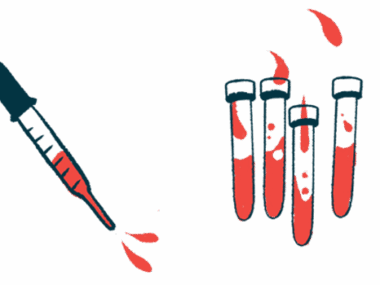Biologic immunosuppressants work better than standard meds: Study
Biologics linked to reduced rate of NMOSD relapses in real-world study
Written by |

Biologic immunosuppressants are more effective than conventional immunosuppressants for people with neuromyelitis optica spectrum disorder (NMSOD) with self-reactive antibodies against the AQP4 protein.
That’s according to real-world data from a Japanese study comparing biologic therapies — Soliris (eculizumab), Enspryng (satralizumab), Ultomiris (ravulizumab), Uplizna (inebilizumab), and rituximab — with nonbiologic immunosuppressive therapies. Biologics are medications derived from living organisms.
“The use of biologics was associated with greatly decreased [annualized relapse rate] and risk for attacks, without increasing the rate of infection and mortality,” researchers wrote.
The study, “The real-world impact of biologics for NMOSD: A retrospective single-center study compared with natural course and conventional treatments in Japanese,” was published in Multiple Sclerosis and Related Disorders.
NMOSD is a progressive autoimmune disease characterized by inflammation in the spinal cord and optic nerve, which is the nerve that sends and receives signals from the eye. Most cases are associated with the production of self-reactive antibodies against AQP4, a protein found on nervous system support cells.
Immunosuppressants can help reduce NMOSD relapses
People with NMOSD experience relapses, or attacks, marked by issues with vision and muscle control, separated by periods of remission. Treatment comprises mainly immunosuppressant agents that aim to reduce the occurrence of relapses, which are associated with cumulative disability.
In Japan, low doses of prednisolone, an oral immunosuppressant, are commonly used to manage NMOSD, with or without other conventional immunosuppressants such as azathioprine. However, with the development of biologic immunosuppressants that have shown great efficacy in preventing NMOSD relapses, the therapeutic landscape has changed around the world.
As of 2022, five biologics — Soliris, Enspryng, Ultomiris, Uplizna, and rituximab — are approved for NMOSD in Japan.
Uplizna and rituximab promote the death of B-cells, the immune cells responsible for producing NMOSD-driving self-reactive antibodies. Soliris and Ultomiris work by suppressing the activation of the complement cascade, a part of the immune system involved in the autoimmune attacks that drive NMOSD. Enspryng blocks the receptor protein of interleukin-6, a pro-inflammatory signaling molecule known to play a role in NMOSD-related autoimmune responses.
“However, the impact of biologics in a real-word NMOSD setting remains to be elucidated,” the researchers wrote.
With this in mind, a team of researchers in Japan retrospectively analyzed data from 109 NMOSD patients (92% women) who were positive for anti-AQP4 antibodies and treated at a single Japanese hospital from January 2000 to December 2023.
The mean age of the patients at disease onset was 45.5, and they were monitored for a median of 12 years.
Prednisolone most commonly used medication for patients in study
The most commonly used drug was prednisolone, used alone (103 patients) or in combination with other conventional immunosuppressive medications. A total of 47 patients received conventional immunosuppressants other than prednisolone, with the most common being azathioprine (37 patients), followed by tacrolimus (10 patients).
Biologic immunosuppressants were given to 28 patients, and Enspryng was the most commonly used (11 patients). Most of these patients had initially been treated with a combination of conventional agents.
Patients treated with biologics had a mean annualized relapse rate (ARR) of 0.01, which was significantly lower than for those receiving prednisolone alone (0.16) or other immunosuppressants (0.17).
Notably, the mean ARR associated with each biologic was below 0.03, which reflected a 95% reduction relative to no treatment (ARR of 0.6).
Further analyses showed patients’ ARR was significantly reduced following the switch from no treatment to conventional immunosuppressants, from prednisolone alone to either immunosuppressants or biologics, and from immunosuppressants to biologics.
Also, the biologics group also lived significantly longer without experiencing a relapse after treatment started compared with the other two conventional treatment groups, “suggesting its potential to save 79% of relapses in nontreated patients, 33% in the [prednisolone alone] group, and 31% in the [immunosuppressants] group during two years,” the team wrote.
95% of those given biologics free from relapses at 2 years
At two years, 95% of those given biologics were still free from relapses, compared with 67% of those treated with prednisolone alone and 69% of those given other immunosuppressive medications.
Additionally, biologic immunosuppressants allowed patients to reduce steroid doses, whose long-term use is associated with serious side effects, and to discontinue conventional immunosuppressants.
“Biologics treatment reduced the need for concomitant [simultaneous] treatments, therefore it could also be a safer treatment option,” the team wrote.
When looking at safety data, the researchers found NMOSD patients treated with biologics tended to experience lower rates of mild and severe infections and to have better survival than those given conventional treatment. However, these differences did not reach statistical significance.
“Biologics are effective and safe in treating patients with [AQP4-related] NMOSD even in real-world situation,” the researchers wrote. “Further multicenter and multiregional prospective research is needed to elucidate the real-world efficacy of individual biologics.”
Of note, most of the researchers have financial links to pharmaceutical companies, including those that market biologic therapies.








